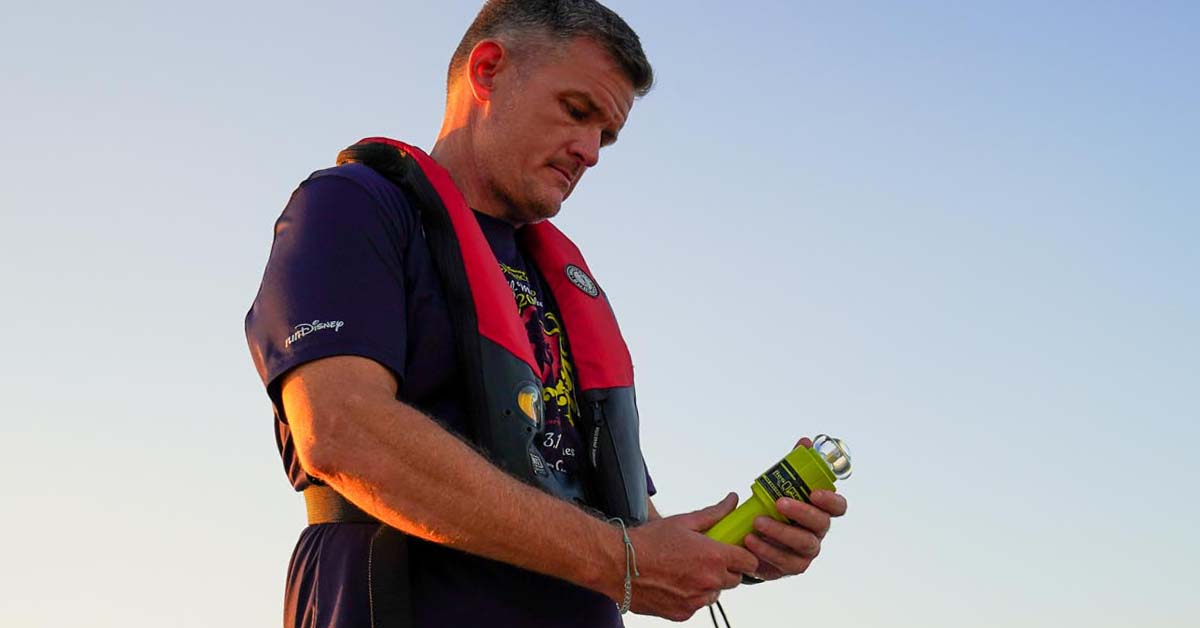
Legal Requirements for Electronic Boat Flares
Posted on May 7, 2024
In the realm of boating safety, few tools are as critical as distress signals. Traditionally, pyrotechnic flares have been the go-to choice for signaling distress at sea. However, as technology advances, electronic boat flares are emerging as a safer and more reliable alternative as USCG approved flares. But what are the legal requirements for using electronic flares, and how do they stack up against traditional flares in terms of compliance and regulations?
Related Blog Article: What is a Marine E-Flare?
Understanding Electronic Boat Flares
Electronic boat flares, also known as electronic visual distress signals (EVDS), utilize LED lights to simulate the appearance of traditional pyrotechnic flares. These devices offer several advantages over their pyrotechnic counterparts, including increased reliability, longer shelf life, and reduced environmental impact. Additionally, electronic flares are not classified as hazardous materials, making them easier to store and transport.
Compliance with Regulations (USCG Approved Flares)
The transition from pyrotechnic flares to electronic flares prompts questions about compliance with maritime regulations. In the United States, the U.S. Coast Guard (USCG) mandates that all boats operating on coastal waters, the Great Lakes, territorial seas, and those waters connected directly to them must carry visual distress signals. While traditional pyrotechnic flares meet USCG requirements, electronic flares must adhere to specific standards outlined in Title 46 of the Code of Federal Regulations (CFR).
Electronic Flares must meet the USCG requirements (46 CFR 161.013), as an approved Night Visual Distress Signal. Example: ResQFlare USCG Approval
A Distress Flag, meeting the requirements of 46 CFR 160.072, must also be included in the package with every E-Flare in order to meet the approval for a Day Visual Distress Signal. Example: ACR Distress Flag USCG Approval
A Distress Flag, meeting the requirements of 46 CFR 160.072, must also be included in the package with every E-Flare in order to meet the approval for a Day Visual Distress Signal. Example: ACR Distress Flag USCG Approval
Combining the above, an Electronic E-Flare and a Distress Flag both compliant with USCG CFR, then the two products combined meet/exceed the requirement for carriage of approved day and night visual distress signals (found in 33 CFR part 175).
Legal Considerations
Boat owners should carefully review local regulations and international standards to ensure compliance with legal requirements for electronic flares. For instance, the International Convention for the Safety of Life at Sea (SOLAS) sets forth guidelines for distress signals on commercial vessels. While some countries may accept electronic flares as a substitute for pyrotechnic flares, others may require both types to be carried onboard.
Electronic Boat Flares Advantages vs. Traditional Pyrotechnic Boat Flares:
Electronic boat flares, like the ResQFlare from ACR, offer numerous benefits that contribute to enhanced safety at sea. Their reliability in adverse weather conditions, extended battery life, and reduced risk of accidental ignition make them an attractive option for boaters. Furthermore, electronic flares are reusable and do not expire, eliminating the need for frequent replacements.
Additional Benefits:
- No expiry date
- Safe for families (no open flame)
- Simple to use (suitable for children and novice boaters during emergencies)
- No concerns about strict disposal rules for pyrotechnic flares (classified as hazardous)
- Waterproof and floats
- One-time buy (reduces long-term expenses)
- Environmentally friendly
- No disposal challenges
- Non-Hazmat shipping
Environment
Pyrotechnic boat flares, while serving as vital distress signals, pose significant environmental hazards. When ignited, these flares release toxic chemicals and heavy metals into the air and water, contributing to pollution and harming marine life. Additionally, the remnants of spent flares often wash ashore, littering beaches and coastal ecosystems. Their single-use nature exacerbates the environmental impact, as the disposal of expired flares further contaminates soil and waterways. Thus, the widespread use of pyrotechnic flares presents a considerable threat to the delicate balance of marine ecosystems, highlighting the urgent need for safer and more sustainable alternatives like LED E-Flares.
More Boaters Are Choosing Electronic Boat Flares
As boating technology evolves, so too do the options for distress signaling. While traditional pyrotechnic flares have long been the standard, more and more boaters are now making the switch to electronic boat flares that offer a modern alternative that meets or exceeds regulatory requirements. By understanding the legal considerations and advantages of electronic flares, boaters can navigate the seas safely and responsibly, ensuring they are prepared for any emergency situation that may arise.

